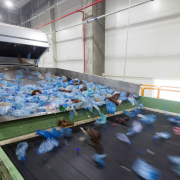European Recyclers’ Strategy on Technical Plastic Parts
Engineering plastics today are the third most widely used material, after packaging and building and construction applications and represent 16 percent of the total EU demand.
According to the association Plastics Recyclers Europe (PRE), engineering plastics are extensively employed in both the automotive and the electrical & electronic (E&E) sectors as they are lighter, more durable, provide increased safety and overall have a better environmental performance when compared to other materials. Consequently, engineering plastics are the preferred material, replacing heavier and less resistant and less sustainable constituents. Taking into consideration the growing digitalization, their production and use will continue to grow very fast. “This means that Europe will be facing a growing amount of waste from technical plastic parts,” PRE pointed out. Recycling rates would remain low, even though facilities and technologies to treat them do exist and are operational on an industrial scale. “To give an example, only 300,000 tons of waste from electrical and electronic equipment (WEEE) was destined for recycling at specialized European facilities in 2017, whereas the recycling capacity needed amounts to around three million tons.”
According to Antonino Furfari, Managing Director of PRE, there is a need to reach for the untapped material, which is not fully exploited yet. This would require extra effort to guarantee the conditions necessary for the recyclers of technical plastic to boost further investment with the goal of transforming this material into a high-quality product. The change will need to implement an improved and increased collection system as well as additional sorting infrastructure, PRE emphasized. These measures should be complemented by enabling free WEEE material circulation across the Member States. A consistent and stable legislative framework is also a prerequisite to boost investors’ confidence. The EU measures should lead to harmonized and balanced rules, which increase the legal certainty for the end-of-waste criteria. Additionally, legal requirements should enable the appropriate management of substances of concern. EU wide certification for recycling facilities would ensure waste traceability and guarantee the highest standards to which a recycler must operate. The quality of the output material of a facility is key to its viability and success.
The PRE Technical Plastic Parts Strategy Paper further elaborates on the measures that need to be taken to advance the treatment of this stream in the EU and presents the state of play in its production and recycling, the European association underlined. “The advancing in the recycling of technical plastic parts will depend equally on the strengthened collaboration and coordination of the actions of the electronic appliances’ manufacturers, automobile manufacturers, sorting centers, waste managements and recyclers, which is a must.”
Photo: Pexels / Pixabay
(GR 22019, Page 27)








